Affiliate links on Android Authority may earn us a commission. Learn more.
Redmi Note 7 vs ASUS Zenfone Max Pro M2: Not so different
April 12, 2019
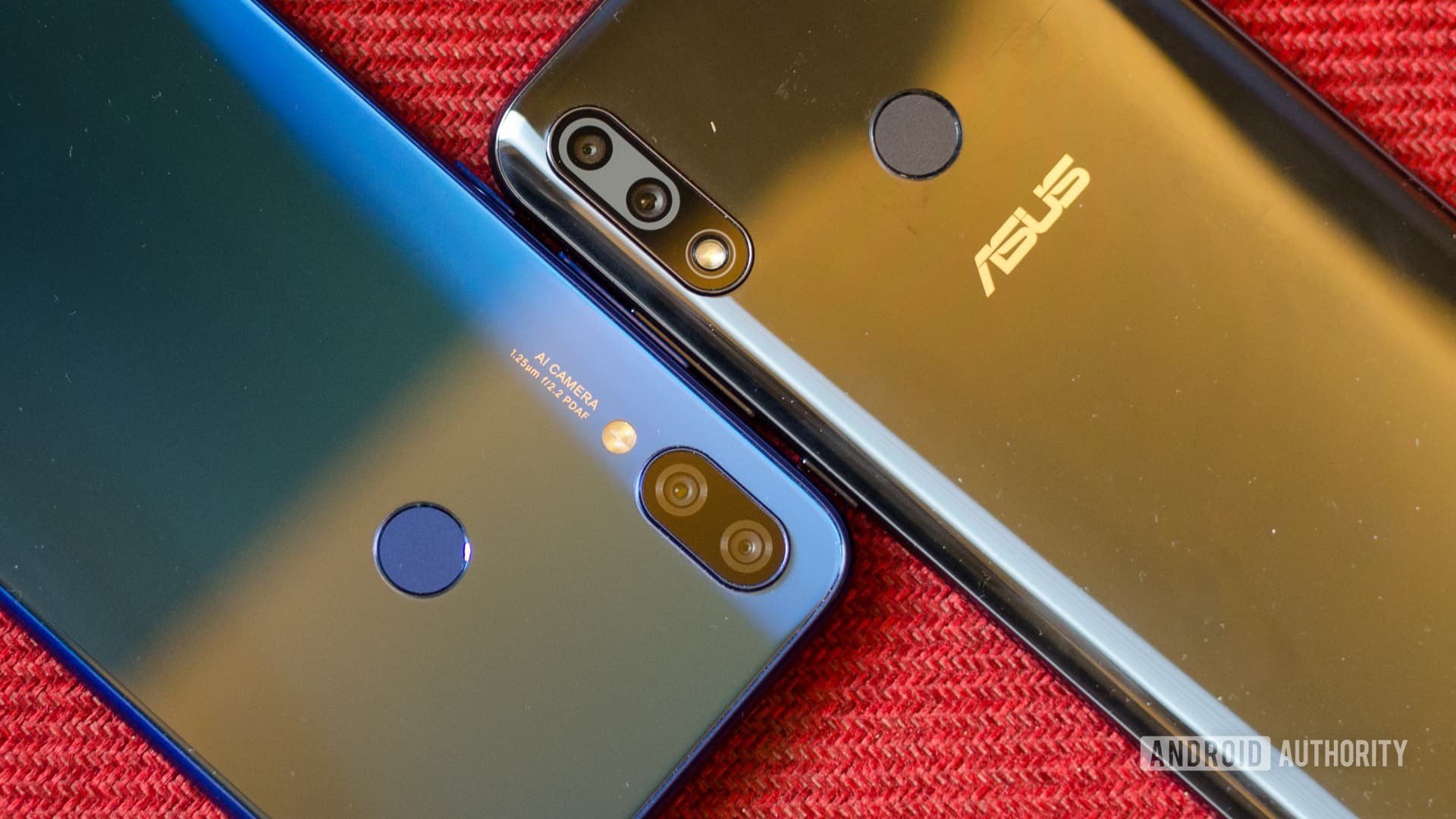
The ASUS Zenfone Max Pro M2 launched in India in December 2018. The device took Xiaomi’s formula of delivering great specs at a fantastic price and carried it a step further. The phone shipped with a Snapdragon 660 processor, Gorilla Glass 6, and a whole lot of goodies that made it a very exciting device at the time.
Cut to April 2019, and we’ve now got a great option in the Redmi Note 7. With refreshed design language that brings the phone straight into the modern era, the Note 7 is a big step ahead for Xiaomi’s Redmi series.
Design
Design similarities between the Redmi Note 7 and the ASUS Zenfone Max Pro M2 end at the high gloss finish on the back of the devices. The Redmi Note 7 is a glass sandwich with Gorilla Glass 5 at the front and the back. The phone keeps it clean with a flat back, minimal branding, and gently curved edges.
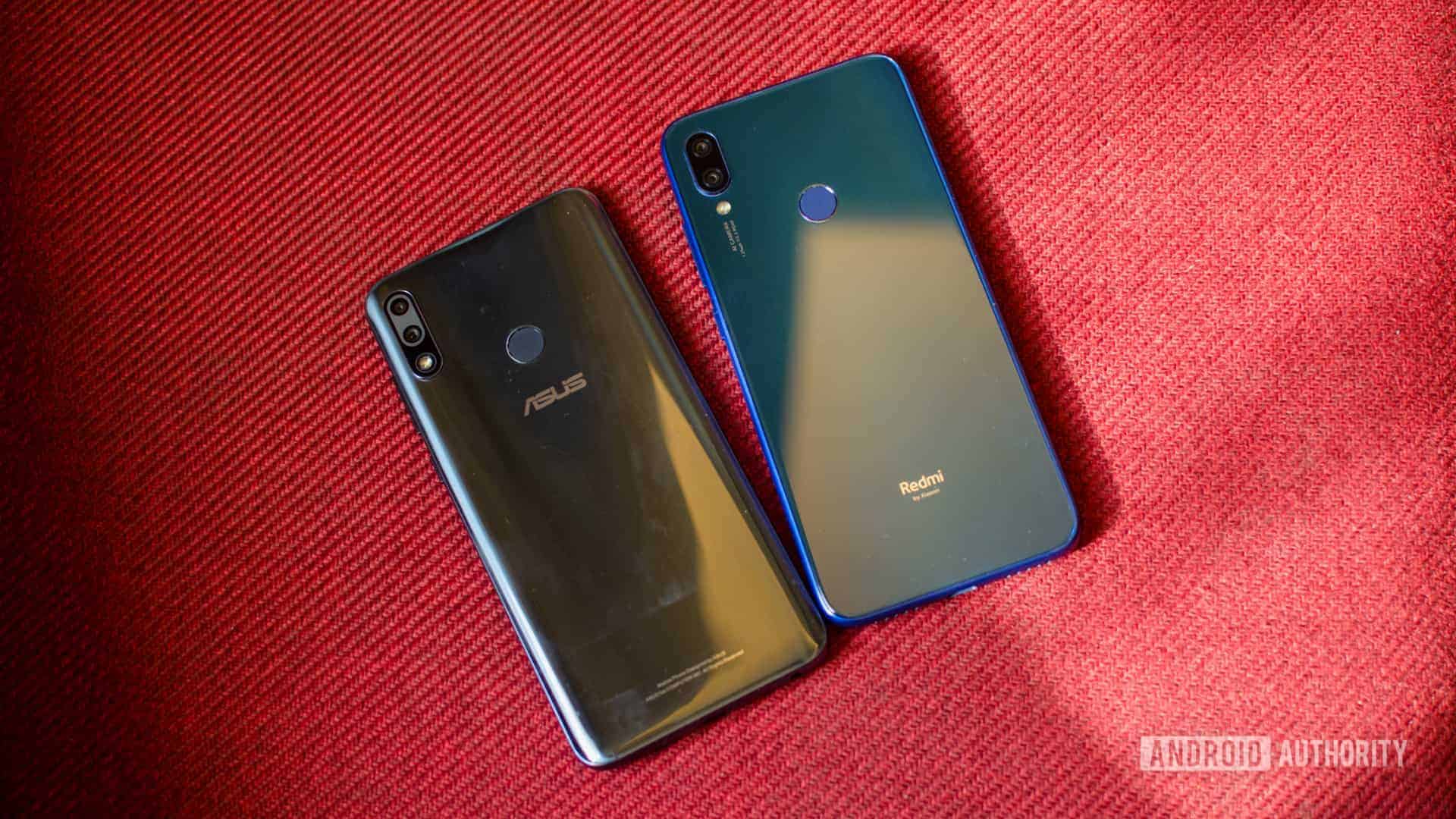
The Zenfone Max Pro M2, on the other hand, has a plastic back with a much larger gradient for the curved edges. I like the fact that the camera module is almost completely flush with the body of the phone. Being a plastic panel, the M2 attracts a lot of scuffs and scratches. Our unit has seen a few months of use and the toll taken on it is quite evident.
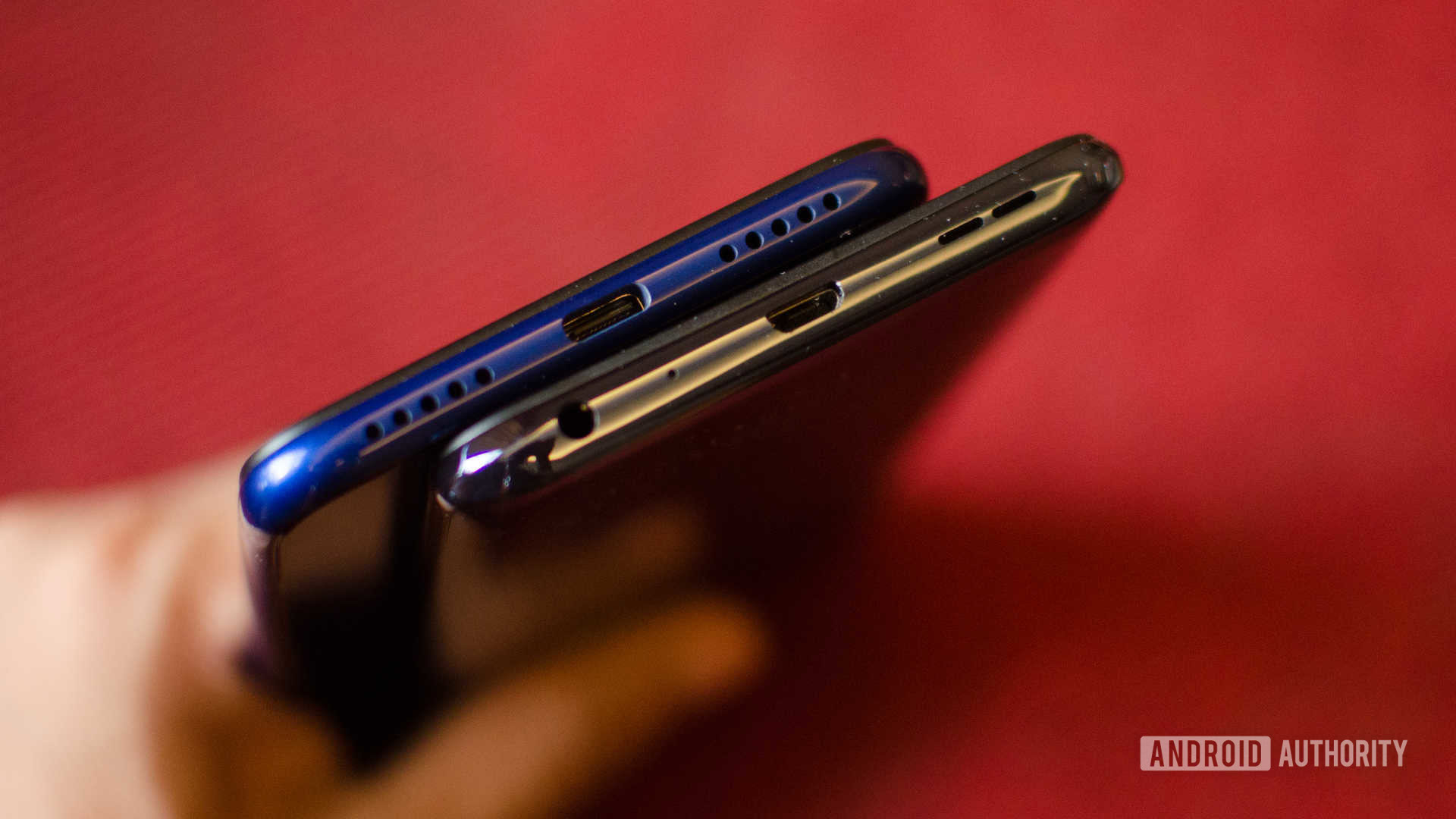
Button placement is identical on the two devices, with the volume rocker and power key both lying on the right hand side. The M2’s keys are a bit more sticky compared to the clicky buttons on the Note 7 but there’s nothing inherently wrong with either. The Zenfone Max Pro M2 wins thanks to its use of a dedicated dual SIM + micro SD solution versus the hybrid SIM tray found on the Redmi Note 7. On the flip side, the M2 uses the decidedly ancient micro-USB connector at the bottom. With the Note 7 series, Xiaomi has finally caught up to competing devices and is using a Type-C port.
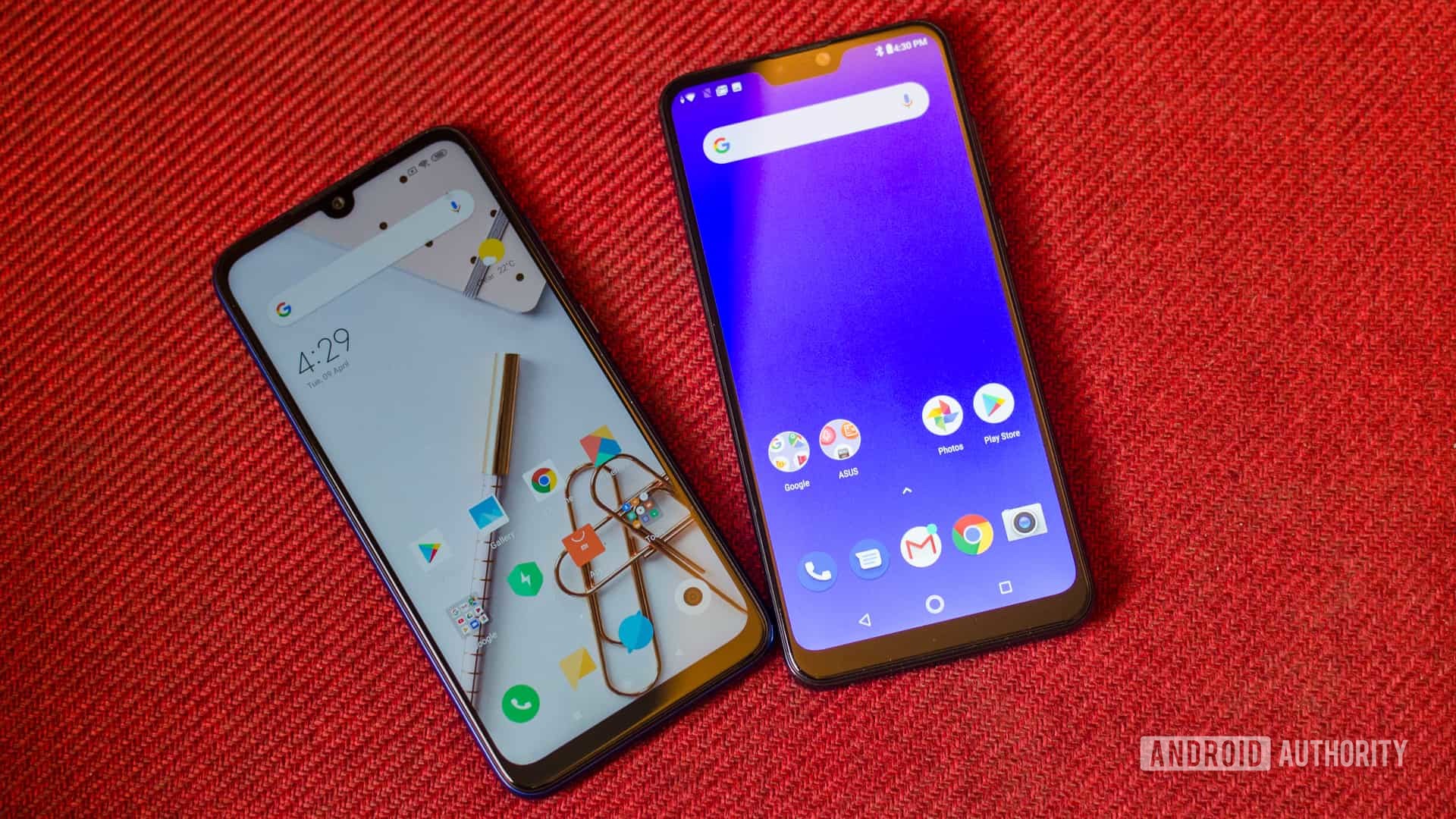
Flip the two phones over and you’ll notice how the Redmi Note 7 and the ASUS Zenfone Max Pro M2 are prime examples of a 2019 vs 2018 school of smartphone design. While the former sports a petite waterdrop notch, the Zenfone Max Pro M2 has a much wider, first-gen notch. Other than that, the two phones are fairly similar with thin bezels on the sides and a thicker chin at the bottom. Ergonomics are great on both devices, though the Redmi Note 7 feels just a bit more premium due to its density and heft. The phone weighs in at a 186 grams which is about 10 grams more than the ASUS Zenfone Max Pro M2. We’re guessing this is primarily because of the heavier glass used at the back of the phone.
Display
Both the Redmi Note 7 and Zenfone Max Pro M2 use IPS LCD panels in contrast to the Super AMOLED displays on Samsung’s A series devices. From a pure visual perspective, there is little to differentiate between the two. Both the screens get sufficiently bright and show minimal color shift. Contrast levels are pretty good, too, and viewing content on both the phones is generally a pleasurable experience. The default color temperature on the Zenfone Max Pro M2 is a bit too cool for my preferences, but it is a cinch to change this in the settings. Both phones have support for the Widevine L1 DRM that lets you stream high resolution content from Netflix.
The default color temperature on the Zenfone Max Pro M2 is a bit too cool, but can be adjusted easily.
The Redmi Note 7 has a slightly longer 19.5:9 aspect ratio compared to the 19:9 aspect ratio on the M2. This is quite noticeable when you hold the phones in the hand with the Note 7 being just a bit more comfortable. The Redmi Note 7 also has a much smaller notch, which definitely makes a difference when viewing content.
Performance
Both the Redmi Note 7 and the ASUS Zenfone Max Pro M2 are powered by a Snapdragon 660 chipset. The chipset uses dual Kryo 260 clusters arranged in a big.LITTLE architecture. The high performance Kryo 260 cores are clocked at 2.2GHz while the efficiency cores come in at 1.8GHz. Both phones ship with three or four gigabytes of RAM depending on the SKU. Similarly, onboard storage is 32 or 64GB depending on the variant you’ve selected.
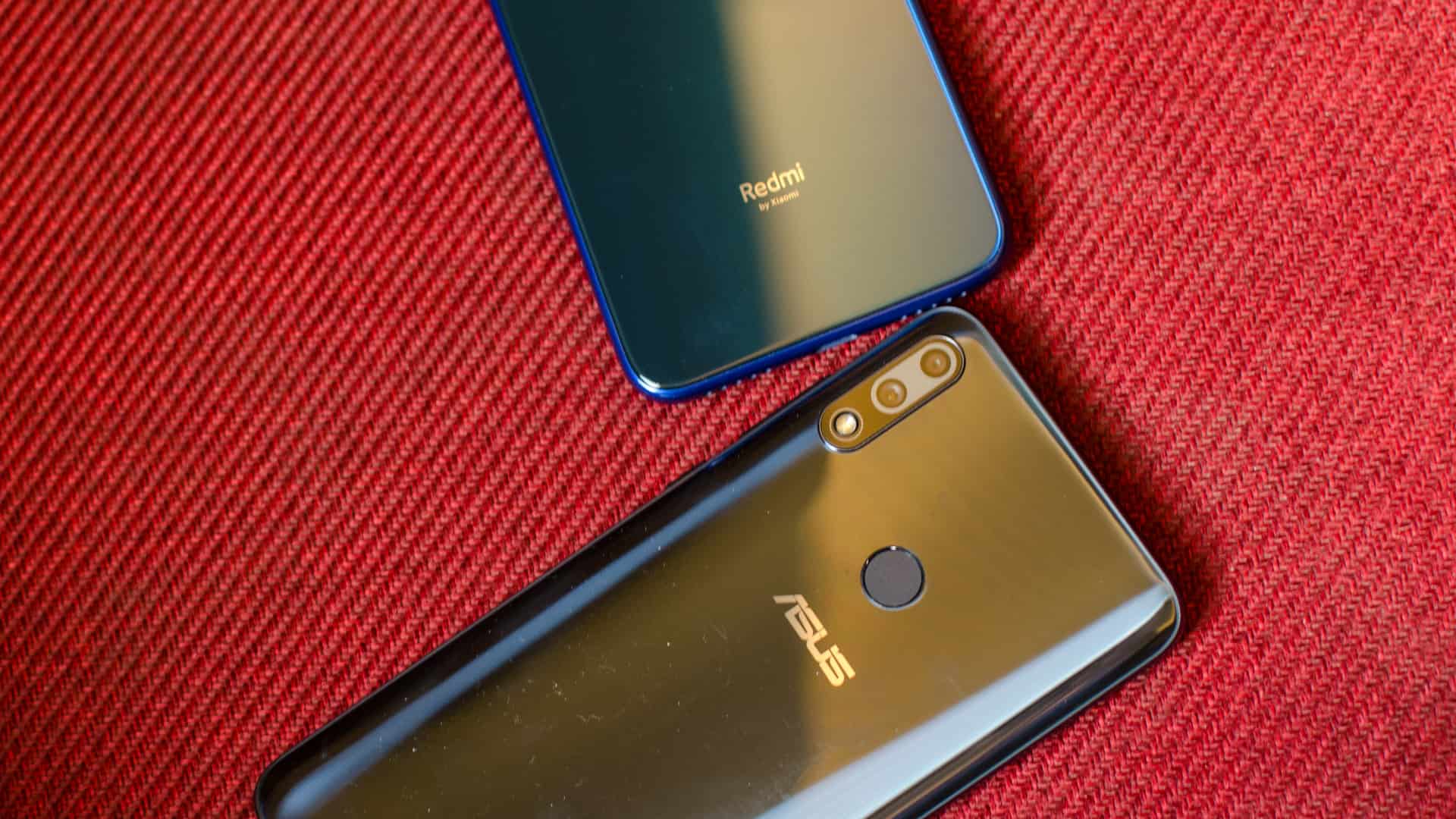
With similar specifications, performance on the two devices is roughly on par. On occasion, the Redmi Note 7 will drop a frame while displaying one of the myriad animations used by the interface, but it doesn’t have a bearing on real-world performance. For all practical purposes, the two phones perform exactly the same. I tried out PUBG on both phones and, as you would expect, both phones can play the game with the graphics bumped up to high and the gaming experience is generally good. Both phones heat up a bit if you are gaming for longer than a few minutes, but the Redmi Note 7 pulls slightly ahead for the better heat dissipation it offers.
For all practical purposes, the two phones perform exactly the same.
Both the phones performed well in our network tests and phone calls sounded loud and clear at both ends. In the battery life tests, the Zenfone Max Pro M2 pulls ahead because of the larger 5,000mAh battery. The Redmi Note 7 is no slouch, either. You’ll comfortably manage a full day of use on with its 4,000mAh power supply, though that extra 1,000mAh on the M2 definitely comes in handy if you need to push into a second day of use.
Camera
The Redmi Note 7 and ASUS Zenfone Max Pro M2 have the same basic combination for their camera set up. Both phones have a dual camera set up with the secondary camera serving as a depth sensor. The Redmi Note 7 has a 12MP primary camera paired with a 2MP secondary sensor. The Zenfone Max Pro M2 also has the same 12MP Sony IMX486 sensor in the primary camera, but it is paired with a 5MP secondary sensor for capturing depth data. Both cameras have 13MP front-facing cameras.
Image quality from both phones is similar with a few key differences in processing. Images from the Zenfone Max Pro err on the cooler side as far as white balance is concerned. Both do a decent job at retaining details and in good lighting you won’t find reason to complain about photographs from either phone.
The Redmi Note 7 does do a better job at toning down the highlights. As you’ll see in the sample, there is still a bit of detail visible on the lens despite the harsh lighting. The M2 has, on the other hand, completely blown the highlights.
Finally, in less than ideal light, the Redmi Note 7 excels at pulling details from the shadows compared to the Zenfone Max Pro M2. The latter has an emphasis on noise reduction which can obscure fine details. Shots from both phones are more than usable, but if i had to chose one the Redmi Note 7 would pull ahead for the better white balance performance and ability to record more detail in low light.
Software
Software is, perhaps, the biggest differentiator between the two phones. The Redmi Note 7 runs MIUI 10 on top of Android 9 Pie. This is a highly customized Android skin that is a pretty steep departure from how stock Android operates. There are a lot of customization options for users that are accompanied by a number of preloaded applications and, unfortunately, ads in the interface.
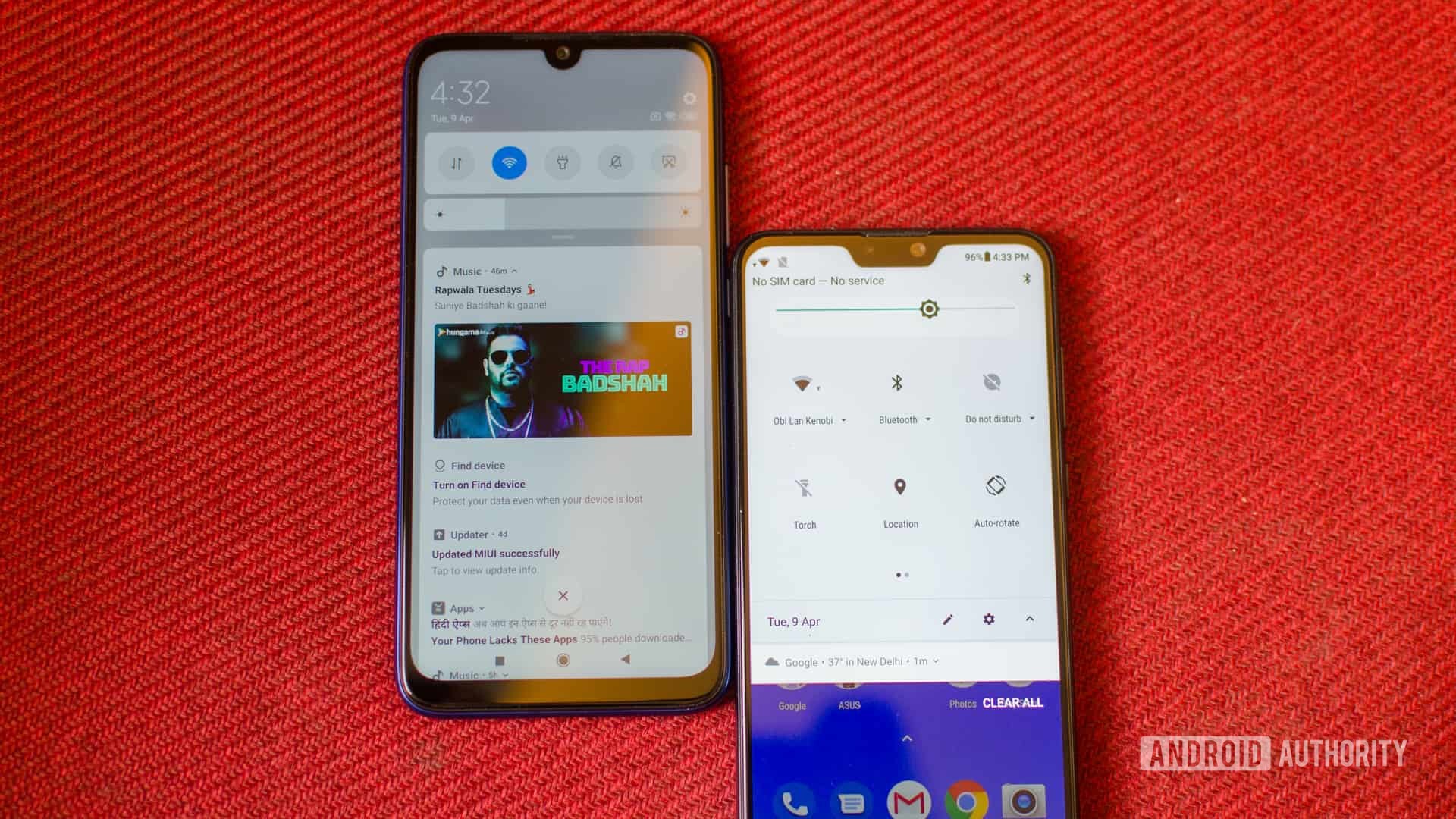
The Zenfone Max Pro M2 runs stock Android with limited bloat with the exception of the Facebook, Instagram, and Messenger apps. These cannot be uninstalled. The M2 still runs Android 8.1, but ASUS claims that an update to Android Pie should start rolling out sometime around April 15.
Redmi Note 7 vs ASUS Zenfone Max Pro M2: Specifications
| Redmi Note 7 | ASUS Zenfone Max Pro M2 | |
|---|---|---|
Display | Redmi Note 7 6.3-inch IPS LCD 1080 x 2340 resolution 19.5:9 aspect ratio Corning Gorilla Glass 5 | ASUS Zenfone Max Pro M2 6.26-inch IPS LCD display 2280 x 1080 resolution 403 ppi |
SoC | Redmi Note 7 Qualcomm Snapdragon 660 (14 nm) Octa-core CPU (4 x 2.2 GHz Kryo 260 + 4 x 1.8 GHz Kryo 260) | ASUS Zenfone Max Pro M2 2.2GHz Qualcomm Snapdragon 660 Adreno 512 GPU |
GPU | Redmi Note 7 Adreno 512 | ASUS Zenfone Max Pro M2 Adreno 512 |
RAM | Redmi Note 7 3GB/4GB | ASUS Zenfone Max Pro M2 3/4GB |
Storage | Redmi Note 7 32GB/64GB Expandable with microSD card | ASUS Zenfone Max Pro M2 32/64GB expandable via microSD up to 512GB |
Cameras | Redmi Note 7 13MP front camera Rear camera: 12MP IMX 486 sensor + 2MP depth sensor 1.25μm pixel size LED flash | ASUS Zenfone Max Pro M2 12MP + 5MP rear cameras 13MP front-facing camera |
Battery | Redmi Note 7 4,000mAh Quick Charge 4.0 support 18W (9V/2A) | ASUS Zenfone Max Pro M2 5,000mAh, micro USB |
Software | Redmi Note 7 Android 9.0 Pie with MIUI 10 | ASUS Zenfone Max Pro M2 Android 8.1 Oreo |
Dimensions and weight | Redmi Note 7 159.2 x 75.2 x 8.1 mm 186 grams | ASUS Zenfone Max Pro M2 157.9 x 75.5 x 8.5mm 175grams |
Price and availability
The Redmi Note 7, should you manage to get your hands on one, is priced between 9,999 and 11,999 rupees (~$145 – $175) for the 3/32GB or 4/64GB variants. The ASUS Zenfone Max Pro M2 matches the Redmi Note 7 in pricing for the two variants. A higher-end version with 6GB of RAM is also available and is priced at 13,999 rupees (~$202).
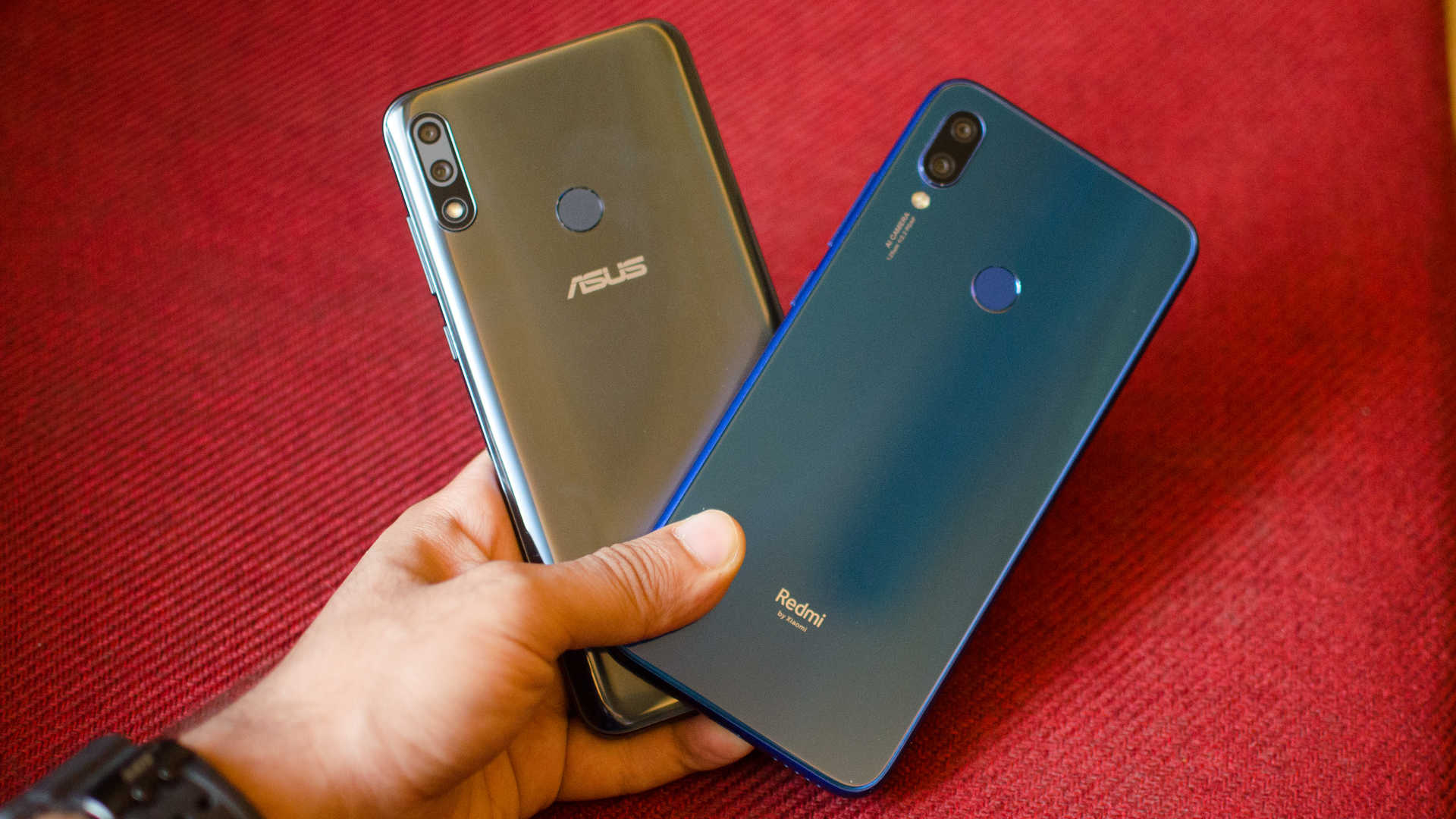
The two phones are more similar than different and, as such, picking out a favorite can be a hard task. The Zenfone Max Pro M2 has the larger battery and lighter software build going in its favor. Meanwhile, the Redmi Note 7 has a more premium build and a slight advantage on the camera front. The smaller waterdrop notch, USB-C port definitely help in making a decision in the Redmi Note 7’s favor. For our money, we would chose the Redmi Note 7 over the ASUS Zenfone Max Pro M2 because it simply feels like a more refined and polished product.
For our money, we would chose the Redmi Note 7 over the ageing ASUS Zenfone Max Pro M2
There are, however, more options to consider. We recently compared the Redmi Note 7 with the Samsung Galaxy M30 and found it to be a very tough call between the two. The Galaxy M30 packs a more versatile camera set up and a particularly refined software experience.
And that wraps up our Redmi Note 7 vs ASUS Zenfone Max Pro M2 comparison. There’s never been a better time for customers looking for a budget, mid-range phone. What would you chose? The Redmi Note 7, ASUS Zenfone Max Pro M2 or something entirely different? Let us know in the comments section.